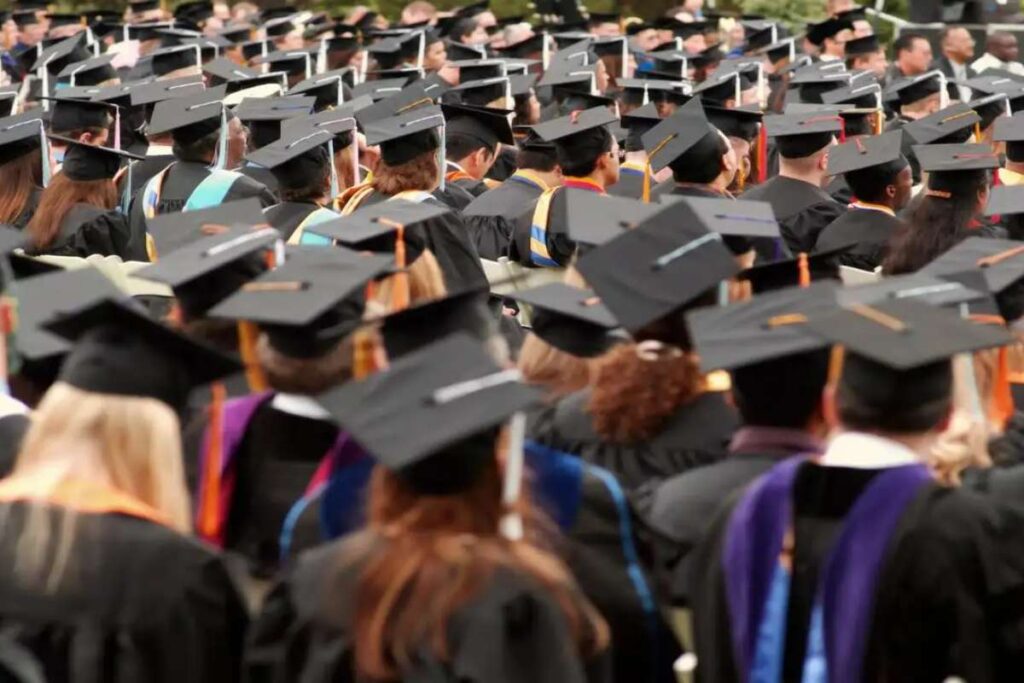US Higher Education is facing an unprecedented crisis. Once a global benchmark, the U.S. university system is now grappling with deep structural challenges, including dwindling enrollments, severe budget deficits, and increasing political pressure. The signs have been mounting for over a decade—college enrollments peaked in 2010, but have steadily declined due to rising tuition costs, pandemic-related disruptions, and shifting social dynamics. Now, with cultural clashes on campus, restrictions on diversity and inclusion (DEI) initiatives, and heightened scrutiny of foreign students, the slow deterioration appears to be accelerating into a full-blown collapse.
Recent events at institutions such as Sonoma State University underscore this shift. The California university is staring down a $24 million deficit and is considering eliminating 22 majors, six departments, and more than 100 faculty roles—most of them within liberal arts and social sciences. Although a court ruling has temporarily paused these plans, university officials are expected to continue pursuing austerity measures through negotiations. This follows the dramatic retrenchment at West Virginia University in 2023, which eliminated nearly a fifth of its undergraduate majors and significantly cut faculty after enrollment dropped by over 3,000 students in six years.
Political and Demographic Pressures
While budgetary woes are critical, political factors are accelerating the collapse. Under both Republican and Democratic administrations, universities have found themselves caught in the crosshairs of ideological battles. Crackdowns on pro-Palestinian protests, the demonization of liberal arts disciplines, and legislative efforts to restrict DEI programs have all contributed to a hostile environment for faculty and students alike. The renewed Trump administration, in particular, has escalated these tensions with aggressive actions against foreign students and faculty, including the revocation of over 1,700 visas and mass deportations, mainly targeting those involved in activism.
These policies threaten one of the few bright spots in US higher education international enrollment. In the 2023–24 academic year, more than 1.1 million international students attended U.S. institutions. However, rising anti-immigrant sentiment, coupled with trade tensions with China and conflicts in the Middle East, is expected to drastically reduce student inflow from key regions. This decline could devastate university revenues and further isolate American campuses from global academic exchange.
Adding to the crisis is a demographic cliff forecast to hit in the coming years, which predicts a sharp drop in the number of college-aged students due to lower birth rates following the 2008 financial crisis. The Federal Reserve Bank of Philadelphia estimates that as many as 80 colleges could permanently shut down by 2026 if worst-case enrollment scenarios materialize.
A Future in Freefall of US higher education
As the financial and political turmoil continues, the liberal arts are bearing the brunt of institutional downsizing. Once seen as the foundation of a well-rounded education, departments like philosophy, history, and gender studies are increasingly viewed as expendable by cost-cutting administrators. Long-term trends have also contributed to this vulnerability, such as the overreliance on adjunct faculty, administrative bloat, and the push to run public universities like private enterprises.
Men’s declining participation in US higher education is another underappreciated factor. Since 1970, the proportion of male undergraduates has dropped from 58% to around 40%, accounting for a significant share of the overall enrollment decline. As these issues converge, many universities are downsizing, merging, or closing altogether. At least 76 institutions have done so in recent years, affecting tens of thousands of students and faculty.
For those not enrolled in elite private universities or flagship public colleges, the future looks especially bleak. Students may find themselves priced out of completing degrees, faculty will face job insecurity, and entire disciplines risk extinction. Once a pillar of American promise, the higher education system is now teetering on the edge—if not already in freefall.
Also Read :- Princeton Student Lauren Blackburn Reported Missing, Search Efforts Intensify

